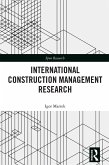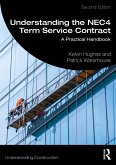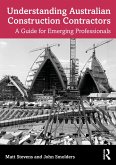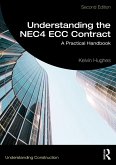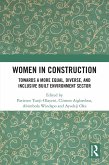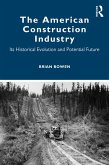Jacky Mazars, Stephane Grange
Damage and Cracking of Concrete Structures (eBook, PDF)
From Theory to Practice
126,99 €
126,99 €
inkl. MwSt.
Sofort per Download lieferbar

0 °P sammeln
126,99 €
Als Download kaufen

126,99 €
inkl. MwSt.
Sofort per Download lieferbar

0 °P sammeln
Jetzt verschenken
Alle Infos zum eBook verschenken
126,99 €
inkl. MwSt.
Sofort per Download lieferbar
Alle Infos zum eBook verschenken

0 °P sammeln
Jacky Mazars, Stephane Grange
Damage and Cracking of Concrete Structures (eBook, PDF)
From Theory to Practice
- Format: PDF
- Merkliste
- Auf die Merkliste
- Bewerten Bewerten
- Teilen
- Produkt teilen
- Produkterinnerung
- Produkterinnerung

Bitte loggen Sie sich zunächst in Ihr Kundenkonto ein oder registrieren Sie sich bei
bücher.de, um das eBook-Abo tolino select nutzen zu können.
Hier können Sie sich einloggen
Hier können Sie sich einloggen
Sie sind bereits eingeloggt. Klicken Sie auf 2. tolino select Abo, um fortzufahren.

Bitte loggen Sie sich zunächst in Ihr Kundenkonto ein oder registrieren Sie sich bei bücher.de, um das eBook-Abo tolino select nutzen zu können.
Understanding and managing damage and cracking in concrete is essential to ensuring the integrity and durability of civil engineering structures.
Both theoretical and practical, this book presents a comprehensive approach to these problems by proposing models and numerical modeling strategies that are treated in a manner that is both simplified and efficient. It proposes a wide variety of applications that are derived from research programs and engineering cases.
This book also addresses many situations, such as monotonic or cyclic behavior, seismic responses, a description of fast…mehr
- Geräte: PC
- ohne Kopierschutz
- eBook Hilfe
Andere Kunden interessierten sich auch für
![International Construction Management Research (eBook, PDF) International Construction Management Research (eBook, PDF)]() Igor MartekInternational Construction Management Research (eBook, PDF)54,95 €
Igor MartekInternational Construction Management Research (eBook, PDF)54,95 €![Management Essentials for Civil Engineers (eBook, PDF) Management Essentials for Civil Engineers (eBook, PDF)]() Cody A. PennettiManagement Essentials for Civil Engineers (eBook, PDF)96,99 €
Cody A. PennettiManagement Essentials for Civil Engineers (eBook, PDF)96,99 €![Understanding the NEC4 Term Service Contract (eBook, PDF) Understanding the NEC4 Term Service Contract (eBook, PDF)]() Kelvin HughesUnderstanding the NEC4 Term Service Contract (eBook, PDF)51,95 €
Kelvin HughesUnderstanding the NEC4 Term Service Contract (eBook, PDF)51,95 €![Understanding Australian Construction Contractors (eBook, PDF) Understanding Australian Construction Contractors (eBook, PDF)]() Matt StevensUnderstanding Australian Construction Contractors (eBook, PDF)49,95 €
Matt StevensUnderstanding Australian Construction Contractors (eBook, PDF)49,95 €![Understanding the NEC4 ECC Contract (eBook, PDF) Understanding the NEC4 ECC Contract (eBook, PDF)]() Kelvin HughesUnderstanding the NEC4 ECC Contract (eBook, PDF)48,95 €
Kelvin HughesUnderstanding the NEC4 ECC Contract (eBook, PDF)48,95 €![Women in Construction (eBook, PDF) Women in Construction (eBook, PDF)]() Women in Construction (eBook, PDF)51,95 €
Women in Construction (eBook, PDF)51,95 €![The American Construction Industry (eBook, PDF) The American Construction Industry (eBook, PDF)]() Brian BowenThe American Construction Industry (eBook, PDF)66,95 €
Brian BowenThe American Construction Industry (eBook, PDF)66,95 €-
-
-
Understanding and managing damage and cracking in concrete is essential to ensuring the integrity and durability of civil engineering structures.
Both theoretical and practical, this book presents a comprehensive approach to these problems by proposing models and numerical modeling strategies that are treated in a manner that is both simplified and efficient. It proposes a wide variety of applications that are derived from research programs and engineering cases.
This book also addresses many situations, such as monotonic or cyclic behavior, seismic responses, a description of fast dynamic situations and effects due to the maturation of concrete at an early age in massive structures. Numerous detailed exercises are provided to help students to understand modeling and calculation techniques.
Damage and Cracking of Concrete Structures is indeed intended for students, but also for engineers and researchers in the field of mechanics of materials and structures and, more generally, in civil engineering.
Both theoretical and practical, this book presents a comprehensive approach to these problems by proposing models and numerical modeling strategies that are treated in a manner that is both simplified and efficient. It proposes a wide variety of applications that are derived from research programs and engineering cases.
This book also addresses many situations, such as monotonic or cyclic behavior, seismic responses, a description of fast dynamic situations and effects due to the maturation of concrete at an early age in massive structures. Numerous detailed exercises are provided to help students to understand modeling and calculation techniques.
Damage and Cracking of Concrete Structures is indeed intended for students, but also for engineers and researchers in the field of mechanics of materials and structures and, more generally, in civil engineering.
Dieser Download kann aus rechtlichen Gründen nur mit Rechnungsadresse in D ausgeliefert werden.
Produktdetails
- Produktdetails
- Verlag: Wiley-Scrivener
- Erscheinungstermin: 29. November 2022
- Englisch
- ISBN-13: 9781394185955
- Artikelnr.: 66898824
- Verlag: Wiley-Scrivener
- Erscheinungstermin: 29. November 2022
- Englisch
- ISBN-13: 9781394185955
- Artikelnr.: 66898824
- Herstellerkennzeichnung Die Herstellerinformationen sind derzeit nicht verfügbar.
Jacky Mazars is Emeritus Professor at the Polytechnic Institute - Grenoble Alpes University, France, Associate Professor at the University of Sherbrooke, Canada and Honorary Director of the 3SR laboratory in Grenoble. He was one of the initiators of applying damage mechanics to concrete and has led many original developments towards understanding the behavior of structures under severe loadings.
Stéphane Grange is Professor at INSA Lyon, France, and Director of the GEOMAS Civil Engineering Laboratory. His research focuses on the dynamic behavior of structures in interaction with their environment and on nonlinear dynamic numerical modeling.
Stéphane Grange is Professor at INSA Lyon, France, and Director of the GEOMAS Civil Engineering Laboratory. His research focuses on the dynamic behavior of structures in interaction with their environment and on nonlinear dynamic numerical modeling.
Foreword by Franz-Josef Ulm ix Foreword by Pierre Labbé xi List of Notations xiii Introduction xix Chapter 1 Mechanisms of Deformation and Failure of Concrete 1 1.1 Concrete: a material that is both widespread and misunderstood 1 1.2 Composition and behavior of concrete at an early age 4 1.2.1 Concrete curing 5 1.2.2 Consequences of curing and phenomena related to the aging of concrete 8 1.3 Main aspects of the mechanical behavior of concrete 11 1.3.1 Concrete under uniaxial loading 11 1.3.2 Concrete under multiaxial loading 19 Chapter 2 Damage Concept and Its Applicability to Concrete 29 2.1 Damage concept 29 2.1.1 Miner cumulative damage law 30 2.1.2 Katchanov's progressive damage law 32 2.1.3 Elasticity-damage coupling 34 2.2 Theoretical bases of damage mechanics 37 2.2.1 Elasticity-damage coupling 37 2.2.2 Isotropic damage theory 40 2.2.3 Damage threshold and notion of loading surface 42 Chapter 3 Damage Modeling 45 3.1 Mazars models for monotonous loadings 45 3.1.1 Constitutive equations 45 3.1.2 Using the model (uniaxial case) 49 3.1.3 Strengths and weaknesses of the Mazars model 51 3.2 Model for cyclic loadings: the
model 53 3.2.1 Concept of effective damage variable 53 3.2.2 Constitutive equations 55 3.2.3 Response of the
model under various types of loading 58 3.2.4 Adaptation of the
model to the case of confined loadings 66 Chapter 4 Numerical Calculation of Damage 71 4.1 Reminders on concepts governing the use of finite elements 71 4.2 Principle flowcharts 73 4.2.1 Flowchart for the Mazars model 73 4.2.2 Flowchart for the
model 74 4.3 Data preparation 75 4.3.1 Identification of modeling parameters 75 4.4 Concrete fracturing energy 80 4.4.1 Intrinsic and extrinsic energy 81 4.4.2 Crack band concept, Hillerborg regularization 84 4.5 Non-local damage concept 84 Chapter 5 Applications to Common Reinforced Concrete Structural Elements Cases 89 5.1 2D FE calculation 89 5.1.1 Details of the experimental program 90 5.1.2 Numerical processing 91 5.1.3 Results 92 5.2 Calculations by Timoshenko enriched beam elements 95 5.2.1 Strengths and weaknesses of the multifiber beam description 96 5.2.2 Bias of results from the choice of material parameters 97 5.2.3 Multifiber beams and strain localization 98 5.2.4 Enriched multifiber description and use of suitable parameters 100 5.2.5 Simulations based on the enriched multifiber description 105 5.3 Multifiber calculations and access to cracking indicators 106 5.3.1 Damage fields 106 5.3.2 Opening of cracks 107 Chapter 6 Modeling of Situations Related to Specific Loadings 111 6.1 Simulation of velocity effects 111 6.1.1 Analysis resulting from the experiment 111 6.1.2 High-velocity loading: application to Spalling tests 115 6.1.3 Loading at medium velocity: impact on a reinforced concrete beam 118 6.2 Simulation of the effects of concrete maturation 121 6.2.1 Problems posed by the behavior of concrete at an early age 122 6.2.2 Case of a beam in a situation of restrained shrinkage 122 6.2.3 Thermomechanical model of concrete at an early age 124 6.2.4 RG8 test: application and results 133 Chapter 7 Structures Combining Beams and Planar Elements 145 7.1 Simulation of the behavior of a reinforced concrete wall 145 7.1.1 Model for structural walls: equivalent reinforced concrete 146 7.1.2 Application to the SAFE experiment shear wall case 147 7.2 Application to a structure combining walls, beams and columns 152 7.2.1 Enriched ERC modeling 153 7.2.2 Modeling the response of the SMART model 155 7.3 Calculation combining 2D finite elements and multifiber beams 157 7.3.1 Case study: loss of bearing capacity of a column in a structure 158 7.3.2 Calculation-experiment comparison results 160 7.4 Conclusion 162 Chapter 8 Assessment of Cracking by Limit Analysis 165 8.1 Characterization of cracking: case of homogeneous fields of tensile elements 165 8.1.1 Limit analysis and yield design theory 165 8.1.2 Case of reinforced concrete beams in bending 167 8.2 Tie rod cracking 170 8.2.1 Localized cracking and diffuse damage 170 8.2.2 Behavioral law for concrete in the diffuse scheme 176 8.2.3 Application to an experiment on tie rods carried out at EPFL 178 8.3 Homogeneous field created by concrete maturation within a cylindrical wall 181 8.3.1 VeRCoRs program and model 181 8.3.2 Mesh of the gusset and temperature conditions 184 8.3.3 Creep, shrinkage and mechanical properties 186 8.3.4 Mechanical calculation 187 8.3.5 Principal results and comparisons with in situ measurements 188 8.4 Conclusion 193 Chapter 9 Exercises and Supplements 195 9.1 Determining mechanical characteristics from experimental curves 195 9.2 Mazars model: axisymmetric triaxial loading under compression 197 9.3 Local and non-local damage 199 9.3.1 Example of a concrete bar under direct tension 199 9.3.2 Local model response: impact of the number of elements 200 9.3.3 Non-local damage problem 201 9.3.4 Objective calculation with a local model: Hillerborg method 203 9.3.5 Conclusion 205 9.4 On the
model 206 9.4.1 Reaching the damage threshold, load-unload criterion 206 9.4.2 On the stress triaxiality factor 207 9.4.3 Response to triaxial axisymmetric compression loading 209 9.5 On the restraint degree R in situations of restrained shrinkage 215 9.6 Solving a simple structure using the PVP* 218 9.6.1 Problem position 218 9.6.2 Using PVP* (assembling the contributions of the elements): preliminary comments for solving 218 Appendix: Prerequisites in Solid Mechanics and Finite Element Methods 223 References 255 Index 265
model 53 3.2.1 Concept of effective damage variable 53 3.2.2 Constitutive equations 55 3.2.3 Response of the
model under various types of loading 58 3.2.4 Adaptation of the
model to the case of confined loadings 66 Chapter 4 Numerical Calculation of Damage 71 4.1 Reminders on concepts governing the use of finite elements 71 4.2 Principle flowcharts 73 4.2.1 Flowchart for the Mazars model 73 4.2.2 Flowchart for the
model 74 4.3 Data preparation 75 4.3.1 Identification of modeling parameters 75 4.4 Concrete fracturing energy 80 4.4.1 Intrinsic and extrinsic energy 81 4.4.2 Crack band concept, Hillerborg regularization 84 4.5 Non-local damage concept 84 Chapter 5 Applications to Common Reinforced Concrete Structural Elements Cases 89 5.1 2D FE calculation 89 5.1.1 Details of the experimental program 90 5.1.2 Numerical processing 91 5.1.3 Results 92 5.2 Calculations by Timoshenko enriched beam elements 95 5.2.1 Strengths and weaknesses of the multifiber beam description 96 5.2.2 Bias of results from the choice of material parameters 97 5.2.3 Multifiber beams and strain localization 98 5.2.4 Enriched multifiber description and use of suitable parameters 100 5.2.5 Simulations based on the enriched multifiber description 105 5.3 Multifiber calculations and access to cracking indicators 106 5.3.1 Damage fields 106 5.3.2 Opening of cracks 107 Chapter 6 Modeling of Situations Related to Specific Loadings 111 6.1 Simulation of velocity effects 111 6.1.1 Analysis resulting from the experiment 111 6.1.2 High-velocity loading: application to Spalling tests 115 6.1.3 Loading at medium velocity: impact on a reinforced concrete beam 118 6.2 Simulation of the effects of concrete maturation 121 6.2.1 Problems posed by the behavior of concrete at an early age 122 6.2.2 Case of a beam in a situation of restrained shrinkage 122 6.2.3 Thermomechanical model of concrete at an early age 124 6.2.4 RG8 test: application and results 133 Chapter 7 Structures Combining Beams and Planar Elements 145 7.1 Simulation of the behavior of a reinforced concrete wall 145 7.1.1 Model for structural walls: equivalent reinforced concrete 146 7.1.2 Application to the SAFE experiment shear wall case 147 7.2 Application to a structure combining walls, beams and columns 152 7.2.1 Enriched ERC modeling 153 7.2.2 Modeling the response of the SMART model 155 7.3 Calculation combining 2D finite elements and multifiber beams 157 7.3.1 Case study: loss of bearing capacity of a column in a structure 158 7.3.2 Calculation-experiment comparison results 160 7.4 Conclusion 162 Chapter 8 Assessment of Cracking by Limit Analysis 165 8.1 Characterization of cracking: case of homogeneous fields of tensile elements 165 8.1.1 Limit analysis and yield design theory 165 8.1.2 Case of reinforced concrete beams in bending 167 8.2 Tie rod cracking 170 8.2.1 Localized cracking and diffuse damage 170 8.2.2 Behavioral law for concrete in the diffuse scheme 176 8.2.3 Application to an experiment on tie rods carried out at EPFL 178 8.3 Homogeneous field created by concrete maturation within a cylindrical wall 181 8.3.1 VeRCoRs program and model 181 8.3.2 Mesh of the gusset and temperature conditions 184 8.3.3 Creep, shrinkage and mechanical properties 186 8.3.4 Mechanical calculation 187 8.3.5 Principal results and comparisons with in situ measurements 188 8.4 Conclusion 193 Chapter 9 Exercises and Supplements 195 9.1 Determining mechanical characteristics from experimental curves 195 9.2 Mazars model: axisymmetric triaxial loading under compression 197 9.3 Local and non-local damage 199 9.3.1 Example of a concrete bar under direct tension 199 9.3.2 Local model response: impact of the number of elements 200 9.3.3 Non-local damage problem 201 9.3.4 Objective calculation with a local model: Hillerborg method 203 9.3.5 Conclusion 205 9.4 On the
model 206 9.4.1 Reaching the damage threshold, load-unload criterion 206 9.4.2 On the stress triaxiality factor 207 9.4.3 Response to triaxial axisymmetric compression loading 209 9.5 On the restraint degree R in situations of restrained shrinkage 215 9.6 Solving a simple structure using the PVP* 218 9.6.1 Problem position 218 9.6.2 Using PVP* (assembling the contributions of the elements): preliminary comments for solving 218 Appendix: Prerequisites in Solid Mechanics and Finite Element Methods 223 References 255 Index 265
Foreword by Franz-Josef Ulm ix Foreword by Pierre Labbé xi List of Notations xiii Introduction xix Chapter 1 Mechanisms of Deformation and Failure of Concrete 1 1.1 Concrete: a material that is both widespread and misunderstood 1 1.2 Composition and behavior of concrete at an early age 4 1.2.1 Concrete curing 5 1.2.2 Consequences of curing and phenomena related to the aging of concrete 8 1.3 Main aspects of the mechanical behavior of concrete 11 1.3.1 Concrete under uniaxial loading 11 1.3.2 Concrete under multiaxial loading 19 Chapter 2 Damage Concept and Its Applicability to Concrete 29 2.1 Damage concept 29 2.1.1 Miner cumulative damage law 30 2.1.2 Katchanov's progressive damage law 32 2.1.3 Elasticity-damage coupling 34 2.2 Theoretical bases of damage mechanics 37 2.2.1 Elasticity-damage coupling 37 2.2.2 Isotropic damage theory 40 2.2.3 Damage threshold and notion of loading surface 42 Chapter 3 Damage Modeling 45 3.1 Mazars models for monotonous loadings 45 3.1.1 Constitutive equations 45 3.1.2 Using the model (uniaxial case) 49 3.1.3 Strengths and weaknesses of the Mazars model 51 3.2 Model for cyclic loadings: the
model 53 3.2.1 Concept of effective damage variable 53 3.2.2 Constitutive equations 55 3.2.3 Response of the
model under various types of loading 58 3.2.4 Adaptation of the
model to the case of confined loadings 66 Chapter 4 Numerical Calculation of Damage 71 4.1 Reminders on concepts governing the use of finite elements 71 4.2 Principle flowcharts 73 4.2.1 Flowchart for the Mazars model 73 4.2.2 Flowchart for the
model 74 4.3 Data preparation 75 4.3.1 Identification of modeling parameters 75 4.4 Concrete fracturing energy 80 4.4.1 Intrinsic and extrinsic energy 81 4.4.2 Crack band concept, Hillerborg regularization 84 4.5 Non-local damage concept 84 Chapter 5 Applications to Common Reinforced Concrete Structural Elements Cases 89 5.1 2D FE calculation 89 5.1.1 Details of the experimental program 90 5.1.2 Numerical processing 91 5.1.3 Results 92 5.2 Calculations by Timoshenko enriched beam elements 95 5.2.1 Strengths and weaknesses of the multifiber beam description 96 5.2.2 Bias of results from the choice of material parameters 97 5.2.3 Multifiber beams and strain localization 98 5.2.4 Enriched multifiber description and use of suitable parameters 100 5.2.5 Simulations based on the enriched multifiber description 105 5.3 Multifiber calculations and access to cracking indicators 106 5.3.1 Damage fields 106 5.3.2 Opening of cracks 107 Chapter 6 Modeling of Situations Related to Specific Loadings 111 6.1 Simulation of velocity effects 111 6.1.1 Analysis resulting from the experiment 111 6.1.2 High-velocity loading: application to Spalling tests 115 6.1.3 Loading at medium velocity: impact on a reinforced concrete beam 118 6.2 Simulation of the effects of concrete maturation 121 6.2.1 Problems posed by the behavior of concrete at an early age 122 6.2.2 Case of a beam in a situation of restrained shrinkage 122 6.2.3 Thermomechanical model of concrete at an early age 124 6.2.4 RG8 test: application and results 133 Chapter 7 Structures Combining Beams and Planar Elements 145 7.1 Simulation of the behavior of a reinforced concrete wall 145 7.1.1 Model for structural walls: equivalent reinforced concrete 146 7.1.2 Application to the SAFE experiment shear wall case 147 7.2 Application to a structure combining walls, beams and columns 152 7.2.1 Enriched ERC modeling 153 7.2.2 Modeling the response of the SMART model 155 7.3 Calculation combining 2D finite elements and multifiber beams 157 7.3.1 Case study: loss of bearing capacity of a column in a structure 158 7.3.2 Calculation-experiment comparison results 160 7.4 Conclusion 162 Chapter 8 Assessment of Cracking by Limit Analysis 165 8.1 Characterization of cracking: case of homogeneous fields of tensile elements 165 8.1.1 Limit analysis and yield design theory 165 8.1.2 Case of reinforced concrete beams in bending 167 8.2 Tie rod cracking 170 8.2.1 Localized cracking and diffuse damage 170 8.2.2 Behavioral law for concrete in the diffuse scheme 176 8.2.3 Application to an experiment on tie rods carried out at EPFL 178 8.3 Homogeneous field created by concrete maturation within a cylindrical wall 181 8.3.1 VeRCoRs program and model 181 8.3.2 Mesh of the gusset and temperature conditions 184 8.3.3 Creep, shrinkage and mechanical properties 186 8.3.4 Mechanical calculation 187 8.3.5 Principal results and comparisons with in situ measurements 188 8.4 Conclusion 193 Chapter 9 Exercises and Supplements 195 9.1 Determining mechanical characteristics from experimental curves 195 9.2 Mazars model: axisymmetric triaxial loading under compression 197 9.3 Local and non-local damage 199 9.3.1 Example of a concrete bar under direct tension 199 9.3.2 Local model response: impact of the number of elements 200 9.3.3 Non-local damage problem 201 9.3.4 Objective calculation with a local model: Hillerborg method 203 9.3.5 Conclusion 205 9.4 On the
model 206 9.4.1 Reaching the damage threshold, load-unload criterion 206 9.4.2 On the stress triaxiality factor 207 9.4.3 Response to triaxial axisymmetric compression loading 209 9.5 On the restraint degree R in situations of restrained shrinkage 215 9.6 Solving a simple structure using the PVP* 218 9.6.1 Problem position 218 9.6.2 Using PVP* (assembling the contributions of the elements): preliminary comments for solving 218 Appendix: Prerequisites in Solid Mechanics and Finite Element Methods 223 References 255 Index 265
model 53 3.2.1 Concept of effective damage variable 53 3.2.2 Constitutive equations 55 3.2.3 Response of the
model under various types of loading 58 3.2.4 Adaptation of the
model to the case of confined loadings 66 Chapter 4 Numerical Calculation of Damage 71 4.1 Reminders on concepts governing the use of finite elements 71 4.2 Principle flowcharts 73 4.2.1 Flowchart for the Mazars model 73 4.2.2 Flowchart for the
model 74 4.3 Data preparation 75 4.3.1 Identification of modeling parameters 75 4.4 Concrete fracturing energy 80 4.4.1 Intrinsic and extrinsic energy 81 4.4.2 Crack band concept, Hillerborg regularization 84 4.5 Non-local damage concept 84 Chapter 5 Applications to Common Reinforced Concrete Structural Elements Cases 89 5.1 2D FE calculation 89 5.1.1 Details of the experimental program 90 5.1.2 Numerical processing 91 5.1.3 Results 92 5.2 Calculations by Timoshenko enriched beam elements 95 5.2.1 Strengths and weaknesses of the multifiber beam description 96 5.2.2 Bias of results from the choice of material parameters 97 5.2.3 Multifiber beams and strain localization 98 5.2.4 Enriched multifiber description and use of suitable parameters 100 5.2.5 Simulations based on the enriched multifiber description 105 5.3 Multifiber calculations and access to cracking indicators 106 5.3.1 Damage fields 106 5.3.2 Opening of cracks 107 Chapter 6 Modeling of Situations Related to Specific Loadings 111 6.1 Simulation of velocity effects 111 6.1.1 Analysis resulting from the experiment 111 6.1.2 High-velocity loading: application to Spalling tests 115 6.1.3 Loading at medium velocity: impact on a reinforced concrete beam 118 6.2 Simulation of the effects of concrete maturation 121 6.2.1 Problems posed by the behavior of concrete at an early age 122 6.2.2 Case of a beam in a situation of restrained shrinkage 122 6.2.3 Thermomechanical model of concrete at an early age 124 6.2.4 RG8 test: application and results 133 Chapter 7 Structures Combining Beams and Planar Elements 145 7.1 Simulation of the behavior of a reinforced concrete wall 145 7.1.1 Model for structural walls: equivalent reinforced concrete 146 7.1.2 Application to the SAFE experiment shear wall case 147 7.2 Application to a structure combining walls, beams and columns 152 7.2.1 Enriched ERC modeling 153 7.2.2 Modeling the response of the SMART model 155 7.3 Calculation combining 2D finite elements and multifiber beams 157 7.3.1 Case study: loss of bearing capacity of a column in a structure 158 7.3.2 Calculation-experiment comparison results 160 7.4 Conclusion 162 Chapter 8 Assessment of Cracking by Limit Analysis 165 8.1 Characterization of cracking: case of homogeneous fields of tensile elements 165 8.1.1 Limit analysis and yield design theory 165 8.1.2 Case of reinforced concrete beams in bending 167 8.2 Tie rod cracking 170 8.2.1 Localized cracking and diffuse damage 170 8.2.2 Behavioral law for concrete in the diffuse scheme 176 8.2.3 Application to an experiment on tie rods carried out at EPFL 178 8.3 Homogeneous field created by concrete maturation within a cylindrical wall 181 8.3.1 VeRCoRs program and model 181 8.3.2 Mesh of the gusset and temperature conditions 184 8.3.3 Creep, shrinkage and mechanical properties 186 8.3.4 Mechanical calculation 187 8.3.5 Principal results and comparisons with in situ measurements 188 8.4 Conclusion 193 Chapter 9 Exercises and Supplements 195 9.1 Determining mechanical characteristics from experimental curves 195 9.2 Mazars model: axisymmetric triaxial loading under compression 197 9.3 Local and non-local damage 199 9.3.1 Example of a concrete bar under direct tension 199 9.3.2 Local model response: impact of the number of elements 200 9.3.3 Non-local damage problem 201 9.3.4 Objective calculation with a local model: Hillerborg method 203 9.3.5 Conclusion 205 9.4 On the
model 206 9.4.1 Reaching the damage threshold, load-unload criterion 206 9.4.2 On the stress triaxiality factor 207 9.4.3 Response to triaxial axisymmetric compression loading 209 9.5 On the restraint degree R in situations of restrained shrinkage 215 9.6 Solving a simple structure using the PVP* 218 9.6.1 Problem position 218 9.6.2 Using PVP* (assembling the contributions of the elements): preliminary comments for solving 218 Appendix: Prerequisites in Solid Mechanics and Finite Element Methods 223 References 255 Index 265

